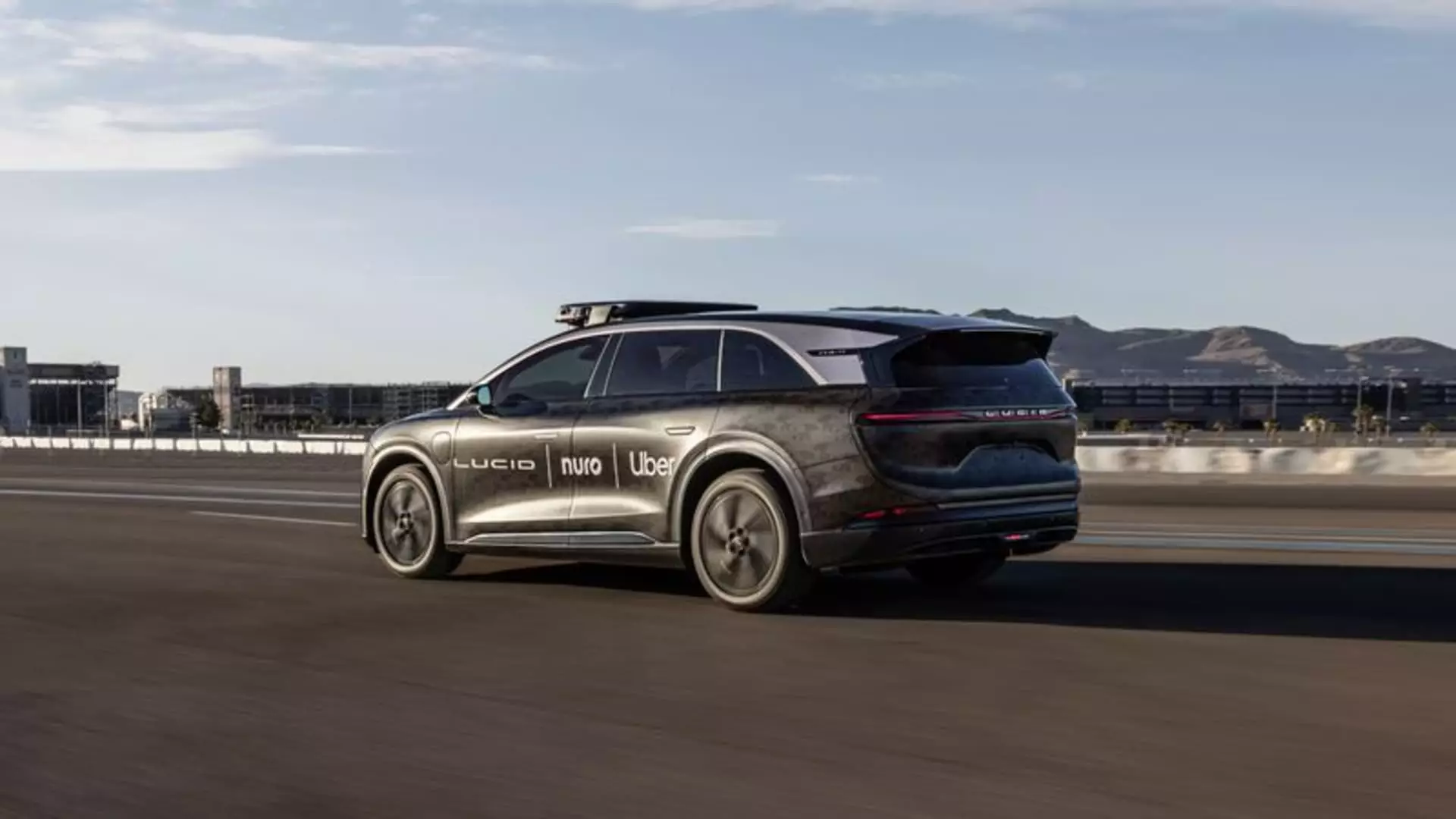Lately, the tech giants and automotive innovators have been vocal about the promise of autonomous vehicles transforming urban mobility. Companies like Uber, Lucid, and Nuro are racing to deploy thousands of robotaxis, heralding a new era where driverless cars promise safety, efficiency, and a revolution in transport. But beneath this shiny surface lies a complex web of assumptions, technological challenges, and economic interests that demand a skeptical eye. While the proponents flaunt this partnership as the dawn of a safer, more accessible future, one must wonder if this narrative glosses over the profound pitfalls and unresolved issues that still loom large.
The Reality Behind the Hype: Technological Overreach and Uncertainty
The push towards Level 4 autonomous vehicles, capable of handling complex urban environments without human intervention, is ambitious. Lucid’s involvement, driven by its expertise in EV technology, aims to reduce costs and enhance vehicle range—factors that seem beneficial on paper. However, the reality is far more complicated. Autonomous driving software like Nuro’s self-driving system is still in developmental stages, and while it can handle “normal” traffic and weather conditions, the unpredictability of even mundane urban scenarios presents a daunting challenge. The recent history of driverless tech demonstrates recurring setbacks: accidents, safety concerns, and the inability to handle the unexpected. The claim that these robotaxis will be safer and more reliable than human drivers is optimistic at best, ignoring the substantial technical uncertainties and potential for catastrophic failures that could jeopardize public safety.
The Economics of Automation: A Struggle for Profitability and Practicality
Even assuming technological obstacles are overcome, the economic model of deploying over 20,000 robotaxis within six years raises serious questions. The hefty $300 million investment from Uber into Lucid, alongside multi-hundred-million-dollar backing for Nuro, indicates enormous capital expenditure. While the initial investment seems substantial, what happens if demand for autonomous ride-hailing doesn’t meet projections? Costs related to vehicle maintenance, software updates, cybersecurity, and liability insurance are often underestimated. Moreover, consumer acceptance remains uncertain; will passengers trust or prefer these driverless taxis over traditional or rideshare options? The narrative that autonomous vehicles will reduce costs and make transportation more accessible might be overly optimistic, especially considering regulatory hurdles and potential public resistance.
Regulation, Liability, and the Shadow of Big Tech
The involvement of Silicon Valley giants like Google-backed Nuro and the backing of funds like SoftBank deepen concerns about concentrated power in the autonomous vehicle industry. These alliances heavily influence public policy, regulation, and market dynamics. As these corporations push ahead with their plans, questions emerge about accountability—if a robotaxi causes an accident, who bears the liability? The current legal frameworks are ill-equipped to handle such complexities, potentially shifting risk from individuals to corporations or governments. Furthermore, the partnership seems to be driven more by corporate interests seeking market dominance than by genuine concern for public welfare. There’s an underlying danger in treating autonomous vehicles as the next big commercial frontier while sidestepping crucial regulatory and ethical considerations.
Is Urban Mobility Still a Human-Centered Experience?
Technology pundits often dismiss the importance of human touch in urban transport, depicting autonomous vehicles as the inevitable future. Yet, transportation is inherently social and cultural, intertwined with community dynamics that cannot be fully captured by algorithms. Can a fleet of driverless taxis genuinely adapt to diverse urban circumstances—emergent crises, unexpected roadblocks, and the nuanced needs of varied populations? The idea of replacing human drivers with software-driven systems risks depersonalizing mobility, losing the warmth of human interaction, and eroding job opportunities for millions of drivers who rely on taxis or ride-hailing services for livelihood. Even with technological advances, the human element remains central to creating inclusive, responsive, and resilient urban environments.
The Reality Check: An Overhyped Vision or the Beginning of Genuine Transformation?
While the allure of autonomous robotaxis is compelling, it is crucial to approach it with a healthy dose of skepticism. The narrative of a seamless, safe, and profitable driverless future sidesteps the significant hurdles that still need resolution. Technological limitations, regulatory complexities, public trust issues, and economic uncertainties all cast a shadow over the promising horizon painted by Uber, Lucid, and Nuro. Instead of unequivocal optimism, there should be a cautious pragmatism that recognizes autonomous vehicles as part of a broader, evolving landscape—one that requires careful regulation, technological refinement, and social acceptance before truly reshaping urban mobility. For now, the dream of driverless taxis remains an aspirational goal rather than an imminent reality, and the road ahead is filled with more challenges than boosters may admit.

